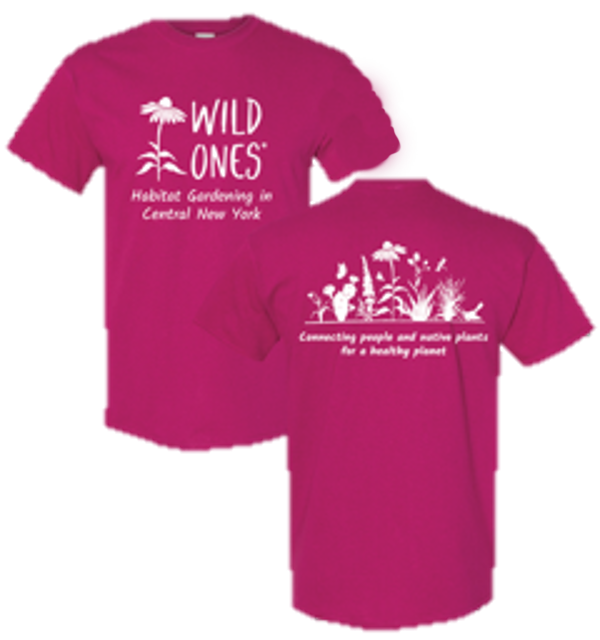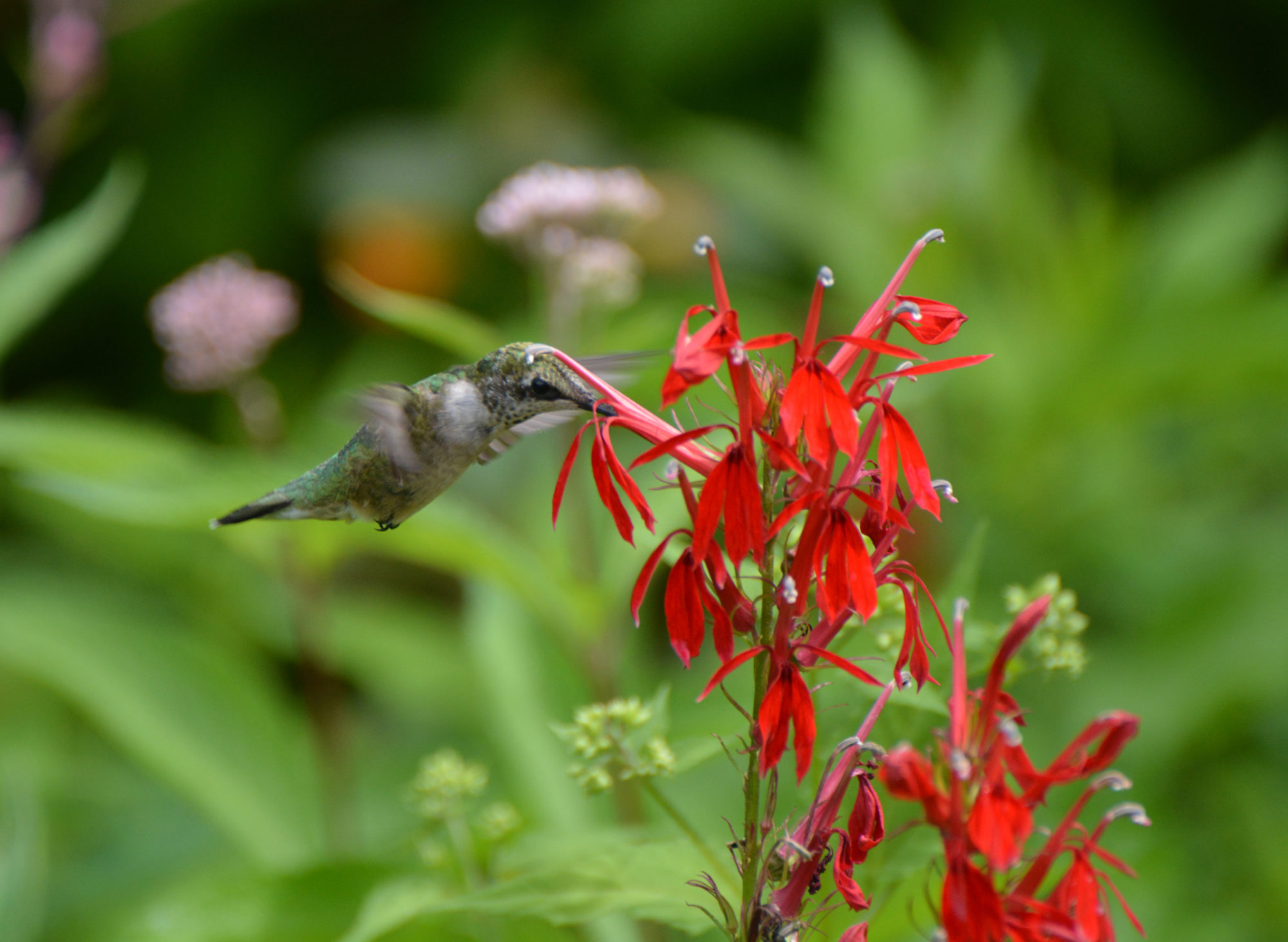Creating earth-friendly, future-friendly home landscapes is essential if our children, grandchildren, and future generations are to inherit a living planet.
Help get the word out!
Our 2024 tabling year is over, but we’ll be active again in 2025.
People are looking for more information on native plants and how to make their gardens oases against global warming. HGCNY has been tabling at local outreach venues to connect people with the information they need. We have found this to be fun as well. But we need more people as the demand has increased.
We provide all materials and partner you with an experienced tabler. You will get an opportunity to expand your knowledge of native plants and meet others who are excited about plants and the possibilities of saving nature – including pollinators and all wildlife that need a place to live.
Email Diana Green at dgreen97@twcny.rr.com to be on the tabling list! You don’t have to be an expert. You’ll be paired with an experienced tabler, and the most important thing you can do is to share your enthusiasm about native plants.

A bonus: You’ll get one of our new Wild Ones HGCNY t-shirts as a thank you!
Resources
- Wild Ones:
- Sample native planting ordinance – and related resources
- VIDEO: Weed ordinances – A recorded webinar. Excellent!
- Wild Ones has a volunteer “Wild Lawyers” team – contact Wild Ones for info
- VIDEO: Cultivating a community of support for native plants
- Wild Ones: Capital Region Chapter:
- Westchester County:
- Love ’em and leave ’em – lots of resources available for other counties
- LELE Toolkit
- Tompkins County, NYS:
- Native Plant Trust:
- Humane Gardener:
- Busting the “Property values” myth
- Butterflies: 1; Bullies: 0 – describes new law that “specifically codifies your right to be wildlife-friendly, plant-friendly, and environmentally conscious.”
- Yes, in my back (and front) yard! – HOA gardening tips
- Beyond the backyard
- NY Times:
- Flutter By Meadows:
- Monarch Watch:
- EPA:
- A Source Book on Natural Landscaping for Public Officials: A toolkit from the Great Lakes EPA, with case studies of communities, public institutions, and corporate campuses; details the many benefits of natural landscaping —including economic!
- VIDEO: Landscaping Naturally – describes the benefits of natural landscaping in the community – includes experiences on public acceptance of such landscapes
- Native Landscaping for Communities – a three-part series:
- The Xerces Society: an invertebrate conservation organization, has a wealth of resources on pollinator conservation for communities:
- A book: Attracting Native Pollinators: Protecting North America’s Bees and Butterflies, is an excellent resource. Includes chapters on Land Management practices, Community Gardens, Urban Greenspaces and Parks, as well as a wealth of general information.
- Pollinator-Friendly Parks: Download this free 52-page full color book
- Making Room for Native Pollinators – How to Create Habitat for Pollinator Insects on Golf Courses: Download this free 30-page full color book from this page
- Pollinator Conservation Resources: Great Lakes Region – Includes regional plant lists and more. New York State is in this Region, but Xerces has materials for all regions.
- VIDEO: BeeCity USA and an example of a Bee City
- Pollinator Pathways:
- American Gardener:
- Ecosystem Gardening:
- American Bird Conservancy:
- How to prevent bird-window collisions – bird-friendly buildings and legislation
- NY Audubon:
- New Hope Audubon (North Carolina):
- Carol Woods – A beautiful green island: – Example of building a new development that kept existing natives
- Baltimore Woods Nature Center:
- Ecological Landscape Alliance:
- Upper Providence Township:
- Meadows vs. grass lawns – an enlightened community!
- M Live:
- Seattle:
- VIDEO: Seattle’s Pollinator Pathway – an excellent example of a community effort to preserve pollinators while creating a beautiful, dynamic living landscape and see the TEDx talk on this project – great talk!
- NY DEC:
- Hemlock wooly adelgid – A threat to our forests
- Penn State Extension:
- National Wildlife Federation:
- T. Gilbert Pearson Audubon:
- NPR:
- Humane Society:
- Grist:
- Yale Environment 360:
- US Forest Service
- Cornell Chronicles:
- HuffPost:
- Conserving Carolina:
- Conservation burial – happens to be NC, but the same ideas apply elsewhere
- Wild Seed Project:
- Mongabay:
- NY Flora Association:
- Legacy lost – “… only one-half of one percent of original, untouched forest remains in the Northeast.”
- The Daily Northwestern:
- The monarch butterfly population might be declining. Here’s what you can do – An example of a community making changes!
- Sylva NC:
- Zoning and Subdivision Ordinance -Landscape ordinance regarding natives and invasives – Look for Section 7.8
- Pollination Guelph:
- VIDEO: Pollination Guelph in Canada – has links to more information
- Feed the Bees:
- VIDEO: Feed the Bees: A community campaign in British Columbia Canada
- Pennsylvania Certification:
- VIDEO: Pollinator Friendly Garden certification – for PA residents. Why not other states?
- Minnesota DNR:
- VIDEO: Roadsides
- Beyond Pesticides:
- Community pesticide use restrictions expand; organic takes root
- Seeing the value of nature through beavers
- Tools for Change – How to organize your community against pesticide use etc.
Reflections


~ Janet Allen, Wild Ones Journal
I’m “Elderly”? So what! – Summer 2024 Vol. 37, No. 2
Municipalities, communities, and commercial properties can save money and reduce greenhouse gas emissions by redesigning their managed properties to include mostly native, more permanent plantings and by rewriting their maintenance contracts to eliminate seasonal plantings.
~ Sue Reed, Climate-wise Landscaping, p. 139
Les Milbrath was fond of reminding me that “nature bats last.” What Les meant by this was that we live in a finite world and humanity will eventually be forced to adopt sustainable practices. While we have no choice regarding whether we eventually adopt these practices, the speed with which they are adopted will determine the grace with which we make this transition.
~ Doug McKenzie-Mohr, Community Based Social Marketing
Many HOAs are still attached to the anachronistic symbol of suburbia: lush lawns that, combined with commercial uses of turfgrass, collectively suck up more water than any other irrigated crop in the country.
~ Nancy Lawson, The Humane Gardener
